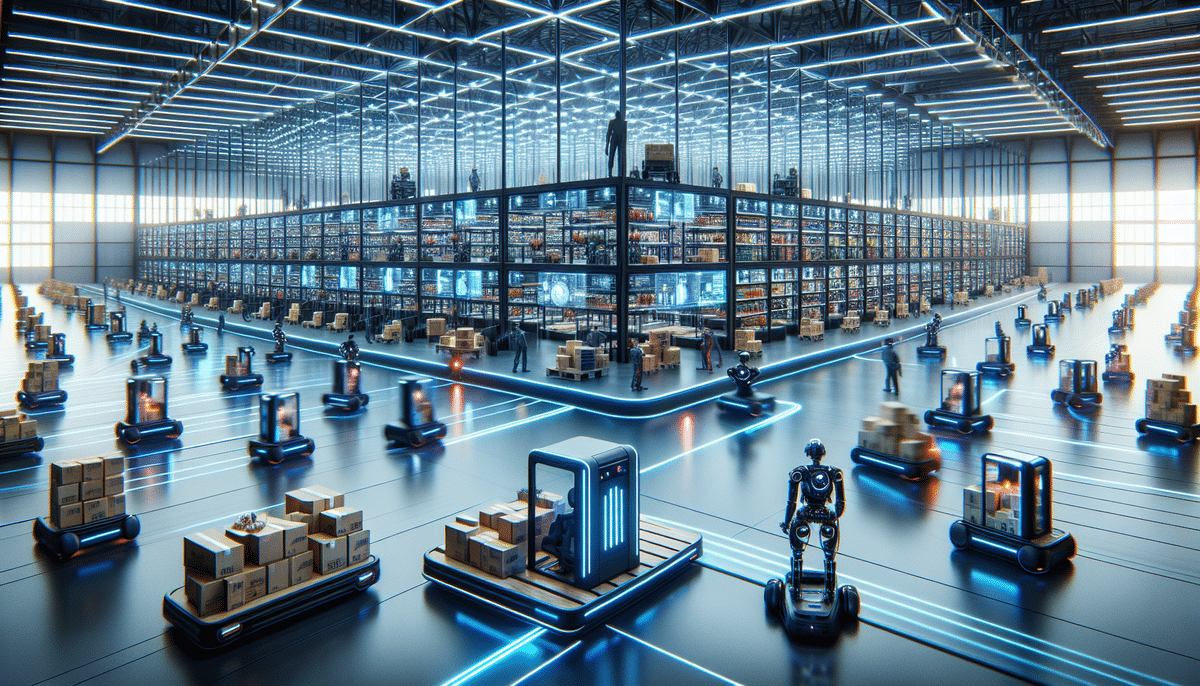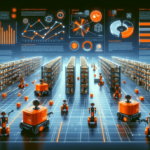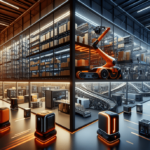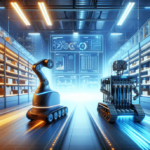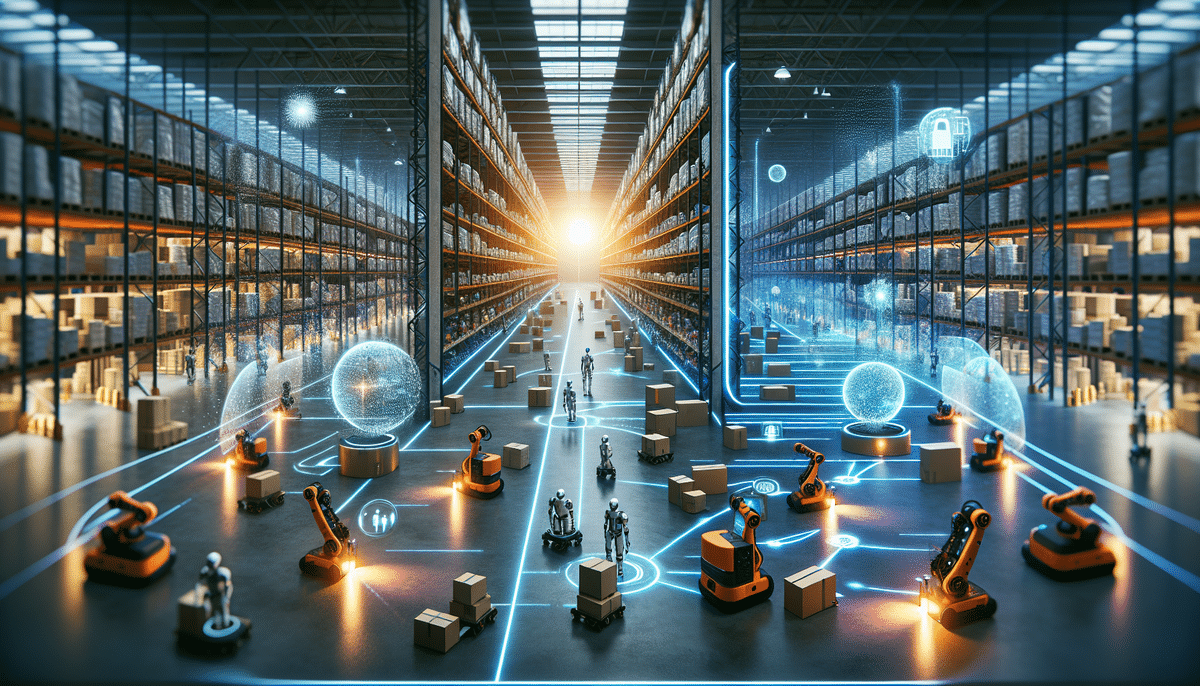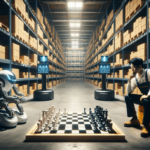Comparing GreyOrange and Amazon Robotics: Enhancing Warehouse Automation
Robotics and automation have revolutionized the way businesses operate, particularly in material handling and logistics. The integration of robots in these processes has significantly boosted supply chain efficiency and productivity. GreyOrange and Amazon Robotics (formerly Kiva Systems) are two leading innovators in this space. This article provides an in-depth comparison of their technologies, pricing models, customer feedback, and future prospects to help you determine the best fit for your business.
Company Profiles
GreyOrange: Pioneers in Intelligent Robotics
Founded in 2011 by Samay Kohli and Akash Gupta, GreyOrange is an Indian multinational robotics firm headquartered in Singapore. The company specializes in developing intelligent robotic systems that automate supply chain and logistics processes. With a strong presence in Asia, Europe, and the Americas, GreyOrange serves major clients such as Flipkart, Jabong, and Kerry Logistics.
GreyOrange's flagship product, the Butler system, is an autonomous mobile robot equipped with advanced algorithms and machine learning capabilities. This system optimizes movements within warehouses, enhancing efficiency and accuracy in order fulfillment.
In recognition of its innovative contributions, GreyOrange was named one of the World Economic Forum's Technology Pioneers in 2018 and has been listed by Deloitte as one of the fastest-growing technology companies in the Asia-Pacific region.
Amazon Robotics: Revolutionizing E-Commerce Fulfillment
Originally founded as Kiva Systems in 2003, Amazon Robotics became a part of Amazon in 2012 and has since been instrumental in transforming warehouse operations. Headquartered in the United States, Amazon Robotics operates over 200,000 robots globally, significantly enhancing Amazon's order fulfillment speed and accuracy.
The company's main product, the Kiva system, utilizes small autonomous robots to move entire shelving units to human workers. This swarm robotics approach streamlines tasks such as picking, packing, and shipping, thereby increasing overall operational efficiency and reducing workplace injuries.
Amazon Robotics continues to invest in cutting-edge technologies like computer vision and machine learning to further optimize its robotic systems, positioning itself as a dominant player in the logistics and supply chain management industry.
Technology Comparison
GreyOrange Technology
GreyOrange employs advanced AI algorithms and machine vision to enable its robots to navigate and operate autonomously within warehouse environments. The Butler system uses real-time object tracking and sensor data to optimize material handling, ensuring efficient and accurate order fulfillment.
Key Features:
- Advanced AI: Enables autonomous navigation and decision-making.
- Scalable Integration: Easily integrates with existing warehouse management systems.
- Space Optimization: Utilizes algorithms to maximize warehouse space utilization.
Amazon Robotics Technology
Amazon Robotics utilizes a swarm robotics system where numerous small robots collaborate to fulfill orders. The robots transport entire pods of products to designated areas where human workers pick the required items. This decentralized approach allows for rapid scaling and flexibility in warehouse operations.
Key Features:
- Swarm Robotics: Multiple robots work in tandem for efficient task completion.
- Centralized Control: A central computer system directs robot movements and tasks.
- Flexible Configuration: Easily adaptable to changing warehouse layouts.
Key Differences
While both companies offer innovative robotic solutions, they differ in their approaches to inventory management and system architecture:
- Inventory Management: GreyOrange employs a centralized system, storing all items in a central location for retrieval. In contrast, Amazon Robotics uses a decentralized approach, with items stored in scattered pods that robots transport to workers.
- System Scalability: GreyOrange's system is highly scalable with seamless integration capabilities, whereas Amazon Robotics offers flexibility through its swarm robotics model.
Pricing Models
GreyOrange Pricing: Robot-as-a-Service (RaaS)
GreyOrange offers a Robot-as-a-Service (RaaS) pricing model, allowing businesses to pay a monthly fee for the use of their robotic systems. This subscription-based approach minimizes upfront costs and provides flexibility to scale services based on business needs.
Advantages:
- Lower initial investment.
- Scalability to adjust based on demand.
- Ongoing support and updates included.
Amazon Robotics Pricing: Traditional Upfront Model
Amazon Robotics adopts a traditional pricing model requiring an upfront investment for the robotic systems, accompanied by ongoing maintenance fees. While this model entails higher initial costs, it offers long-term ownership benefits and potential cost savings over time.
Advantages:
- Ownership of robotic systems.
- Potential long-term cost savings.
- No recurring rental fees.
Cost Considerations
Choosing between GreyOrange's RaaS and Amazon Robotics' upfront model depends on your business's financial strategy and scalability requirements. GreyOrange's model may be more appealing for businesses seeking flexibility and lower initial expenses, whereas Amazon Robotics' model suits those aiming for long-term investment and ownership.
Industry Applications
GreyOrange Applications
GreyOrange's versatile robotic systems are employed across various industries, enhancing operational efficiency and accuracy:
- Retail: Facilitates rapid and precise order fulfillment.
- Manufacturing: Streamlines material handling processes.
- E-Commerce: Automates fulfillment centers to handle high order volumes.
- Healthcare: Assists in transporting medical supplies within hospitals.
- Food & Beverage: Automates picking and packing to ensure hygiene and efficiency.
Amazon Robotics Applications
Amazon Robotics' systems are integral to optimizing operations in key industries:
- Retail: Enhances speed and accuracy in order processing.
- Warehousing: Improves material handling efficiency and reduces human error.
- E-Commerce: Streamlines fulfillment processes for online retailers.
- Healthcare: Transports medical supplies and delivers medications within healthcare facilities.
Customer Feedback
GreyOrange Customer Reviews
Customers generally praise GreyOrange for its ability to significantly enhance warehouse efficiency and streamline order fulfillment. The system's scalability and integration capabilities are frequently highlighted as major benefits. However, some feedback points to the high costs associated with implementation and maintenance as potential drawbacks.
Amazon Robotics Customer Reviews
Amazon Robotics receives positive feedback for its robust performance in handling large order volumes and improving overall warehouse efficiency. The flexibility and adaptability of the system are also commended. On the downside, some customers mention the substantial initial investment as a barrier to entry.
Future Outlook
GreyOrange's Prospects
The future looks promising for GreyOrange, driven by the growing demand for automation in supply chain and logistics. The company continues to invest in research and development, aiming to introduce new features and enhance the capabilities of its robotic systems. Expansion into emerging markets and diversification of applications are key focus areas.
Amazon Robotics' Prospects
Amazon Robotics is poised to maintain its leadership in the robotics industry, bolstered by Amazon's expansive e-commerce operations. Continued advancements in AI, machine learning, and computer vision are expected to further optimize their systems. The increasing reliance on automated solutions in logistics ensures sustained growth and innovation.
Conclusion: Choosing the Right System for Your Business
Both GreyOrange and Amazon Robotics offer advanced robotic solutions with distinct advantages. GreyOrange's RaaS model is ideal for businesses seeking flexibility and lower initial costs, while Amazon Robotics' traditional pricing model suits those aiming for long-term ownership and scalability. Consider your specific business requirements, budget constraints, and growth projections to make an informed decision. Implementing the right robotic system can lead to significant improvements in efficiency, accuracy, and overall operational performance.













